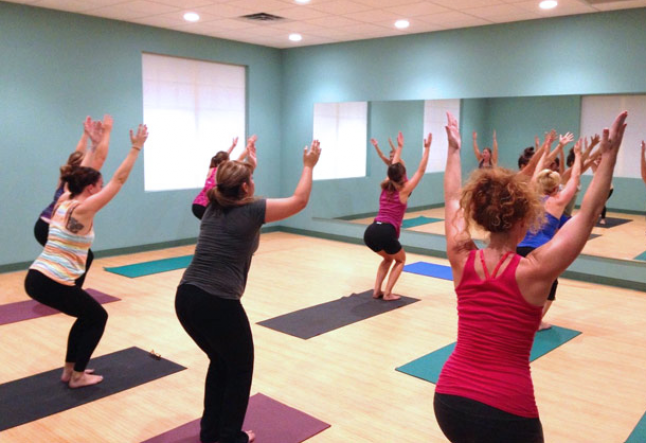Understanding retention and making your Yoga business grow

A while back, I surveyed a number of yoga studios nationally and asked if they knew what their retention rates were.
Retention is normally thought of as the percentage of people who continue to come on a regular basis after their first few months.
Most studio owners reported extremely high retention rates, somewhere in the order of 70% to 80%. Problem is… they were wrong, because they didn’t get comprehensive yoga stats.
Why short-term retention is misleading
As studio owners (and for those who also run a yoga school online), we like to believe that what we do is so needed, with such a great impact, that nearly everyone who walks through our doors will become lifelong members of our communities.
So we tend to remember all those who keep coming back, but forget about all those who gave it a go and then bailed soon after.
It’s human nature to remember things this way—the old “fish story” phenomenon—which is why so many studio owners have so much trouble when they learn the truth about their own (often abysmal) retention rates. But it’s necessary medicine in order to stay healthy.
How one Yoga studio discovered their real retention rate
Let’s look at a case study from a recent client. A few months back, I got a call from a fellow studio owner asking if I was interested in either buying him out or investing in his studio to keep it afloat. Unfortunately, these calls aren’t rare for me.
So I asked if he’d mind sharing some information with me first.
He revealed his basic stats—visits, pricing, revenue, attendance trends, new student tallies, monthly expenses, and a variety of other data. It seemed like he was bringing a fair number of new students in every month, but his business was still hurting.
“I don’t get it,” he said. “I track everything, and my retention is actually great. About 70%.”
“Wow!” I said. “That’s tremendous for this business.”
But something was off. If that was his real retention rate, there’s no way he’d be in the financial trouble he was in.
So I asked, “Tell me, how did you calculate it?”
Being meticulous about management, he ran a tight ship and used Mindbody’s online management system to run his business and calculate retention. As soon as he told me this, I knew where the problem lay.
“Are you using the default setting to calculate retention with Mindbody?”
The answer was yes. And that was the issue.
The critical difference between short-term and annual retention
The default setting only shows near-term retention—the percentage of people who came in over the last few months and are still coming in.
This is generally the same window we think about, as studio owners, when we are asked to guess our studio’s retention.
But looking only at this time frame is a massive mistake.
It can provide a false sense of security to studio owners who are, in reality, in deep trouble. The real mission-critical stat for retention is annual retention.
Annual retention statistics tell us how many new students we need to bring in over the course of a full year to:
- Make up for the ones we lose
- Grow our student bases year-over-year
The fitness industry has known this for decades and, in fact, lives and dies largely by this single bit of information. So, let’s see how this unfolded with our friendly studio owner.
When I asked him to change the retention setting to January 1 – December 31, the report revealed a radically different picture.
While his near-term retention was up around 70%, his annual retention was only 18%.
Why this matters for your Yoga business growth
That means that in any given year, only 18% of his students remain. Put another way, he loses 82% of his students every year. And truth be told, from what I’ve seen, that is not so unusual.
Let’s put this in perspective:
- If he brought in 1,000 new students in January, only 180 would still be regulars by the following January.
- That means he needs to continually generate over 800 new students a year just to stop from shrinking—that’s not even considering his desire for growth.
Success Story: How one Yoga studio increased retention from 18% to 60% in a year
Let’s talk about a studio that turned things around after realizing they had an 18% annual retention rate (just like the case study earlier).
Meet Serene Flow Yoga, a small community-focused studio in Austin, Texas.
They were losing nearly 80% of their students every year, struggling with declining revenue, and relying on a constant influx of new students to survive.
After running their annual retention report, the owner, Lisa, realized the hard truth:
🔹 Out of 500 new students per year, only 90 were still attending after 12 months.
🔹 The studio was trapped in an endless cycle of trying to replace lost students rather than building a loyal, thriving community.
Lisa decided to make three big changes:
1. A personalized student Onboarding experience
Instead of just selling class packages, she implemented a structured onboarding program that included:
✅ A 30-day “Welcome to Yoga” Challenge to keep students engaged.
✅ A dedicated teacher check-in after their 5th class.
✅ A private WhatsApp group for new members, where they could ask questions and stay motivated.
2. A membership-first pricing model
She shifted pricing to encourage long-term commitment:
✅ No more single-class drop-ins. Instead, she introduced “Starter Memberships” at a lower monthly rate to hook new students early.
✅ Members received exclusive perks (free workshops, discounts, priority booking).
✅ A rewards program where students earned points for attending regularly.
3. Building a stronger commaunity
She made the studio more than just a place to practice yoga:
✅ Monthly social events (yoga & brunch, meditation nights, retreats).
✅ A student recognition board to celebrate milestones like 50 and 100 classes attended.
✅ A referral program, where members got a free month for bringing in new students.
The results: From struggling to thriving
Within 12 months, Lisa saw dramatic improvements:
📈 Annual retention jumped from 18% to 60%
💰 Revenue became more stable, as fewer students left
🎉 Student referrals doubled, fueling organic growth
Instead of fighting to replace lost students, Lisa now nurtures a loyal, engaged yoga community that keeps coming back.
Run your own retention report (do this Now!)
If you were shocked at the 18% annual retention number, I’d strongly suggest you run the same report for your studio.
- If you use Mindbody, make sure you adjust the retention tracking period to an annual timeframe (January 1 – December 31).
- If you don’t have a tracking system, do it manually:
- Count the total number of new students from last year.
- Count how many of them are still attending regularly today.
- Divide the second number by the first and multiply by 100. That’s your annual retention rate.
👉 Want a free retention calculator template? Click here!
3 Quick fixes to improve Yoga studio retention today
If your annual retention rate is lower than 40%, it’s time to take action. Here are three quick strategies you can use right now:
1. Implement a new Student Onboarding System
Most students decide within the first 4-6 weeks if they’ll continue. Make those first weeks count:
✅ Offer a 30-day intro package with unlimited classes.
✅ Assign a welcome buddy (a senior student who checks in with them).
✅ Send a personalized email sequence with encouragement and tips.
2. Create a membership-first pricing model
Drop-ins and class packages are great, but memberships keep students engaged long-term.
✅ Offer tiered memberships (e.g., Basic – 4x/month, Unlimited – All Access).
✅ Provide member perks like free workshops or discounts on yoga gear.
✅ Allow auto-renewals with an easy opt-out policy.
3. Build a community, Not just a class schedule
A strong community keeps students coming back even when life gets busy.
✅ Host monthly social events (e.g., potlucks, meditation circles).
✅ Start a private Facebook or WhatsApp group for members.
✅ Celebrate milestones (e.g., “Congrats to Sarah on 50 classes!”).
Final thoughts
Understanding retention isn’t just about numbers—it’s about ensuring your yoga business thrives long-term.
Run your own retention report, make the necessary adjustments, and start building a sustainable, growing community today.
And if you’re wondering why retention rates in yoga studios tend to be so low, and what’s causing students to leave… well, that’s a topic for next time. Stay tuned!
Did this help? Let’s chat!
🔹 What’s your annual retention rate? Share in the comments!
🔹 What’s one strategy you’ve used to improve retention in your studio?
Let’s grow together. 💙🧘♀️




